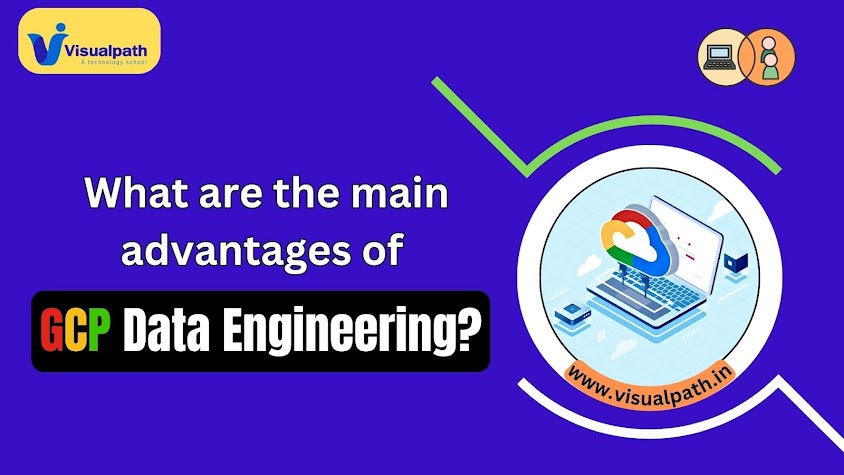Understanding EL, ELT, and ETL in GCP Data Engineering
In the realm of data engineering, particularly when working on Google Cloud Platform (GCP), the terms EL, ELT, and ETL refer to key processes that facilitate the flow and transformation of data from various sources to a destination, usually a data warehouse or data lake. For a GCP Data Engineer to understand the differences between these processes and how to implement them efficiently using GCP services. GCP Data Engineering Training
1. Extract, Load (EL)
In EL (Extract, Load), data is extracted from various sources and then directly loaded into a target system, typically a data lake like Google Cloud Storage (GCS) or BigQuery in GCP. No transformations occur during this process. EL is commonly used when:
- The priority is to ingest raw data quickly.
- Data needs to be stored for later processing.
- There is a need for data backup, archiving, or unprocessed analytics.
GCP Services for EL:
- Cloud Dataflow: A fully managed streaming analytics service used to extract data from sources like Apache Kafka, and Pub/Sub, and then load it directly into BigQuery.
- Cloud Storage: Allows storing raw extracted data that can be later accessed and processed. GCP Data Engineer Training in Hyderabad
Key Benefits of EL in GCP:
- Faster initial data ingestion as transformations are deferred.
- Suits scenarios with high data volumes and real-time ingestion needs.
2. Extract, Transform, Load (ETL)
ETL is the traditional data pipeline model where data is extracted, transformed into a desired format, and then loaded into the destination system. ETL is suitable when the data requires preprocessing, cleaning, or enrichment before analysis or storage.
In the ETL process, the data transformation happens outside of the target system, often in intermediate storage or memory. This is particularly useful when dealing with large datasets that need thorough cleaning or when businesses want to standardize data before loading it into systems like BigQuery for analytics.
GCP Services for ETL:
- Cloud Dataflow: A powerful tool for both batch and real-time data processing, allowing engineers to extract data, apply transformations (e.g., filtering, aggregation), and load it into BigQuery or Cloud Storage.
- Cloud Dataprep: A visually-driven data preparation tool that allows data engineers to clean, structure, and transform raw data without writing code.
Key Benefits of ETL in GCP:
- Enables extensive preprocessing and transformation of data before storage, ensuring the quality of data for analysis.
- Helps businesses load only refined and structured data into their systems, improving the efficiency of analytics workflows.
3. Extract, Load, Transform (ELT)
ELT is a modern approach where data is first extracted and loaded into a storage system like BigQuery, and the transformation happens afterwards within the storage system itself. Unlike ETL, where transformations occur before loading, ELT leverages the computational power of modern data warehouses to perform transformations on loaded data.
ELT is typically used in scenarios where the target system (e.g., BigQuery) has powerful data processing capabilities. This approach is often more flexible for handling large-scale data transformations as it delays them until after the data is loaded. Google Cloud Data Engineer Training
GCP Services for ELT:
- BigQuery: GCP’s fully managed, serverless data warehouse, ideal for ELT workflows. Data can be loaded in raw format, and SQL-based transformations can be applied as needed.
- Cloud Composer (Apache Airflow): Orchestrates the workflow of ELT pipelines, managing extraction, loading, and the transformation process in a scheduled or event-driven manner.
Key Benefits of ELT in GCP:
- Greater scalability for large datasets, as transformations leverage the computational power of BigQuery.
- Increased flexibility, allowing iterative and on-demand transformations without reloading data.
Choosing the Right Process in GCP
For a GCP Data Engineer, selecting between EL, ETL, and ELT depends on the specific use case:
- EL: Best for raw data storage or when transformation can wait.
- ETL: Ideal for structured, preprocessed data required for specific business use cases.
- ELT: Optimal when dealing with large volumes of data and leveraging the power of modern data warehouses like BigQuery for flexible, on-demand transformations.
By mastering these processes and understanding their differences, GCP data engineers can build efficient and scalable data pipelines that fit their organization’s needs. Google Cloud Data Engineer Online Training
Visualpath is the Best Software Online Training Institute in Hyderabad. Avail complete GCP Data Engineering worldwide. You will get the best course at an affordable cost.
Attend Free Demo
Call on - +91-9989971070.
WhatsApp: https://www.whatsapp.com/catalog/919989971070
Blog Visit: https://visualpathblogs.com/
Visit https://visualpath.in/gcp-data-engineering-online-traning.html



Comments
Post a Comment